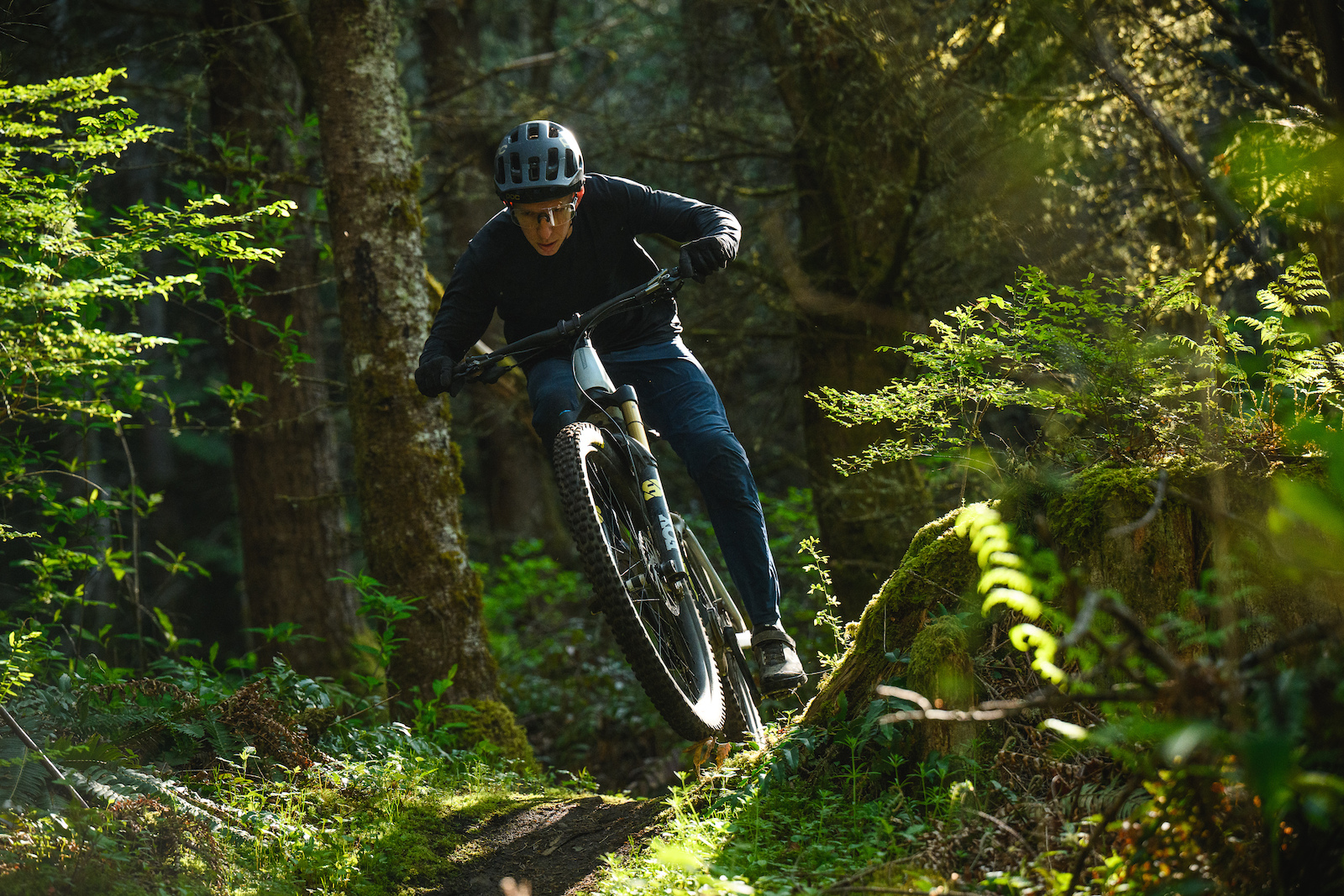All of the models roll on 29” wheels and have 160mm of rear travel, but Orbea’s MyO program allows for a wide range of configuration options. Riders can select from a 160 or 170mm fork, 625 Wh or 750 Wh battery, and there’s even the option to add on a display or light package, and to customize the paint scheme.
The model reviewed here is the Wild M-LTD, which comes with Bosch’s CX-Race motor. In addition to being lighter than the regular CX motor, the R version gets a Race mode that propels the bike forward a little longer after a rider stops pedaling.
• Wheel size: 29″
• Carbon frame
• Bosch CX Race motor / 625 Wh battery
• Travel: 160mm (r) / 170mm fork
• 63.5º head angle (170mm fork)
• 77.5º seat tube angle
• 448mm chainstay
• Sizes: S, M, L, XL
• Weight: 49.75 lb / 22.56 kg (size large w/o pedals)
• Price: $11,124 USD
• orbea.com
Highlights of this particular build kit include a 170mm Fox 38 Factory fork, Float X2 shock, Shimano XTR brakes and 12-speed drivetrain, Maxxis Assegai / DHR II DH casing tires, and Orbea’s own OQUO aluminum MC32 Team wheelset. That all adds up to $11,124 USD. Total weight, including the 625 Wh battery, was 49.75 lb / 22.56 kg.
Introduction
Construction & Features
Geometry & Sizing
Suspension Design
Setup
Climbing
Descending
How Does it Compare?
Pros & Cons
Pinkbike’s Take
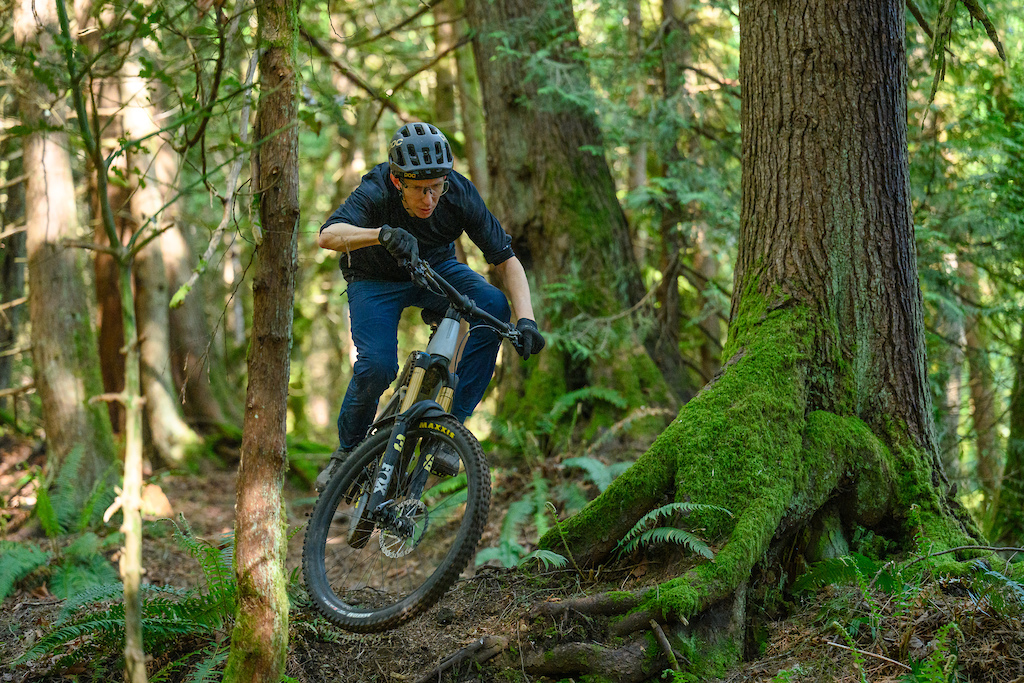
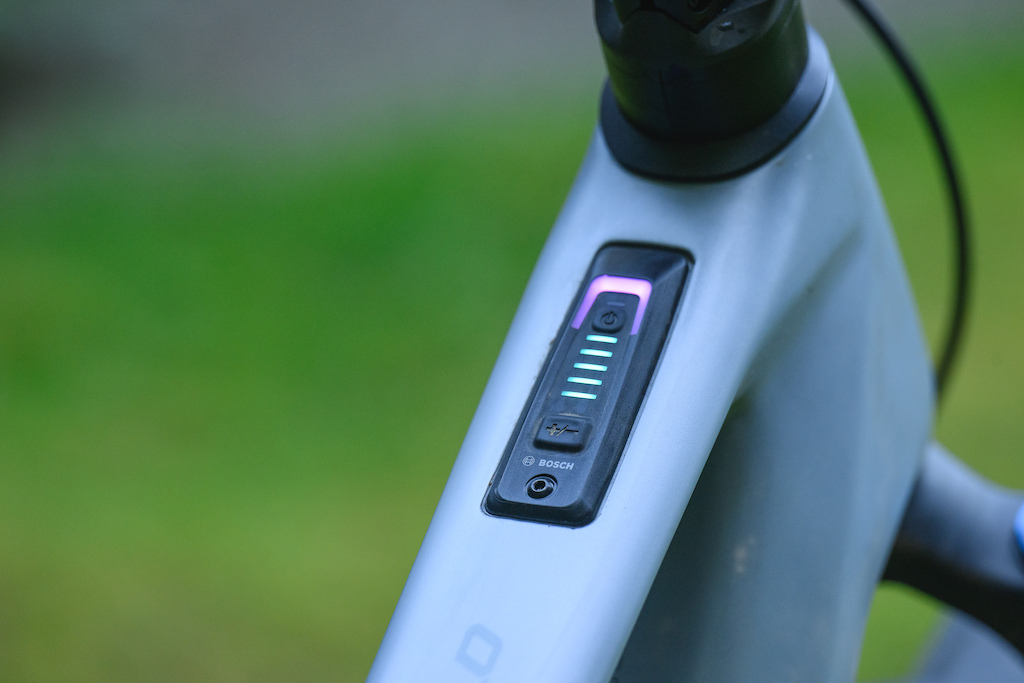
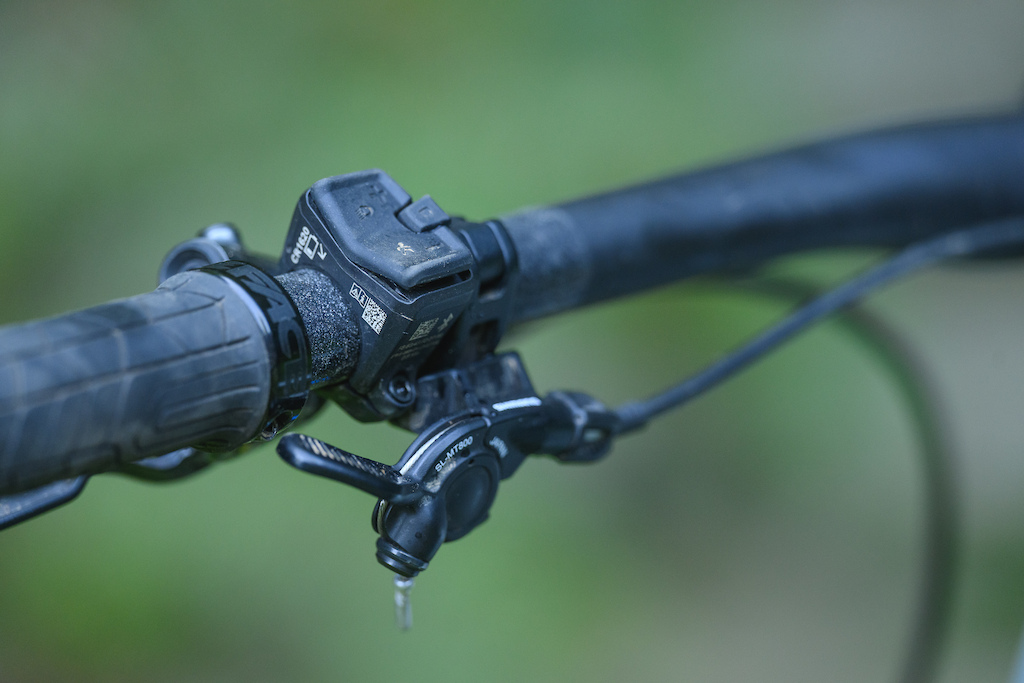
The biggest change to the Wild’s frame for 2023 is the elimination of the door that used to be on the underside of the downtube to access the battery. Battery hatches tend to add weight and reduce frame stiffness, and according to Orbea the new design increased the front triangle stiffness by 52% – that’s a significant number. Now, the downside is that swapping batteries quickly isn’t really feasible; riders looking for the longest range possible will want to choose the 750 Wh option.
Orbea did a great job of eliminating any unnecessary bells and whistles on the Wild. All too often, it seems like eMTBs show up with big displays, awkward remotes, and a rat’s nest of wires cluttering the cockpit. With the Wild, there’s a small wireless remote on the left hand side of the handlebar, Bosch’s System Controller integrated into the top tube, and that’s it. It’s clean, effective, and there aren’t any delicate parts waiting to get smashed to bits in a crash.
A series of LED lights indicate the battery level, and another light at the top of the display shows what mode the bike is in. There are four customizable modes: Eco, Tour+, eMTB, and Race. It’s possible to add on Bosch’s Kiox display for riders that want to see more information at a glance, but I’m a fan of the less is more approach – knowing what the mode and the battery percentage is all the information I need.
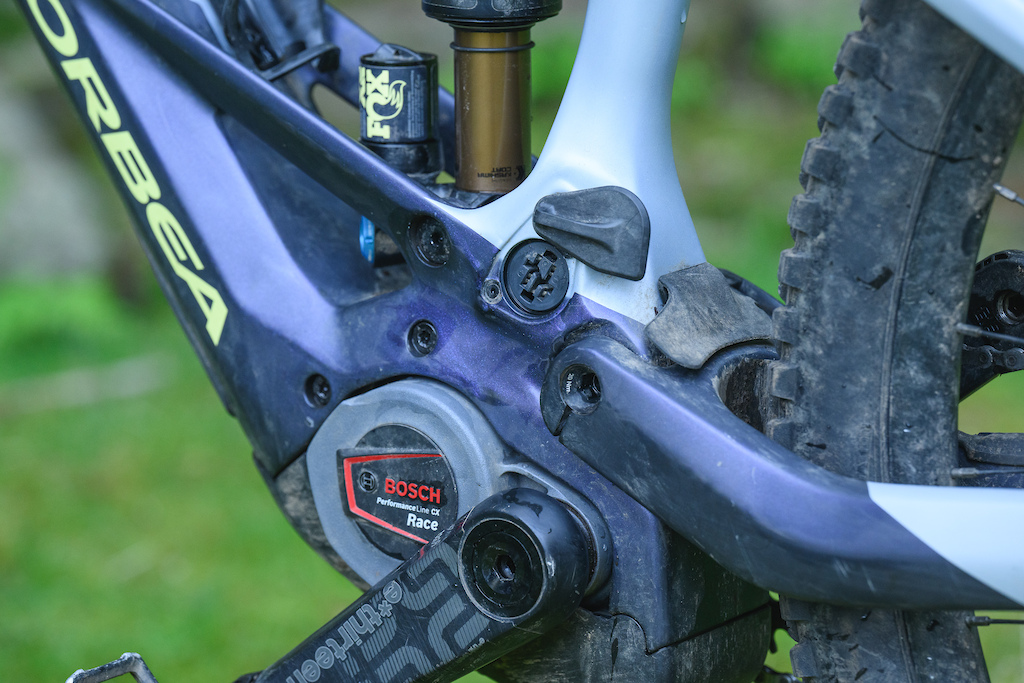
As for the motor itself, the CX-R motor puts out up to 85 Nm of torque, and provides up to 400% rider assistance in Race mode, versus the 340% from the standard version. It’s also 150 grams lighter than that CX Performance model.
The charging port is located at the base of the seat tube, hidden under a sturdy plastic cover. This is another area that all to often gets overlooked – getting the design right on this small part is harder than it seems.
Other details include a straight seat tube the provides plenty of space for running a longer travel dropper post, room for a water bottle inside the front triangle, and thru-headset cable routing. I know, another bike with this silly design trend. I’m still not a fan, but this iteration does seem to deal with the elements better than the versions that place the cable ports in the headset top cap, and Orbea did go with a stainless steel upper bearing to improve its lifespan
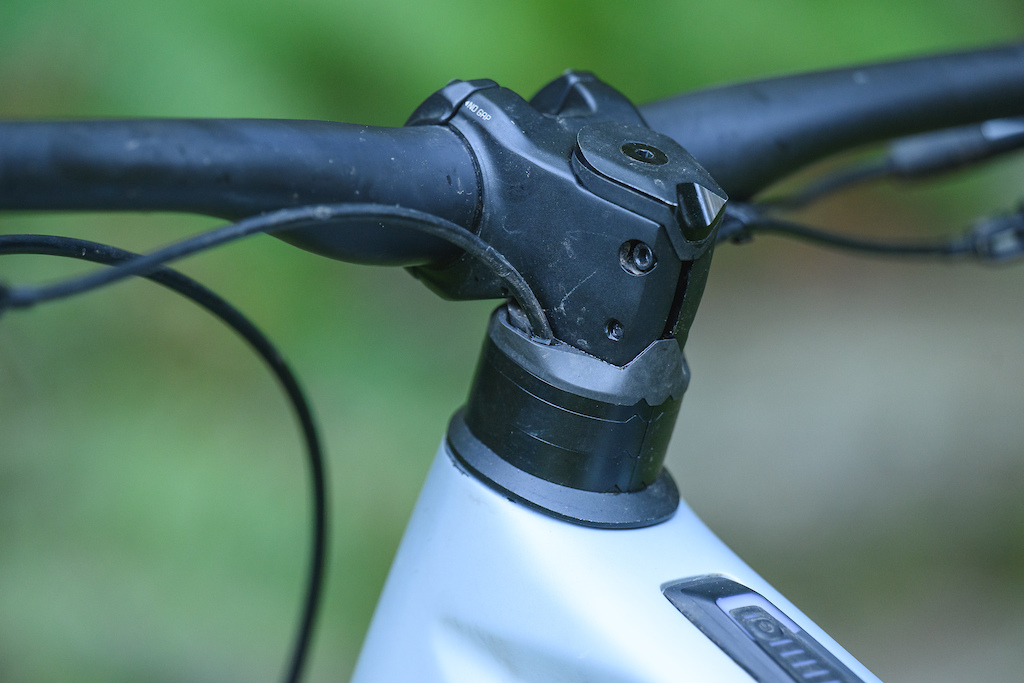
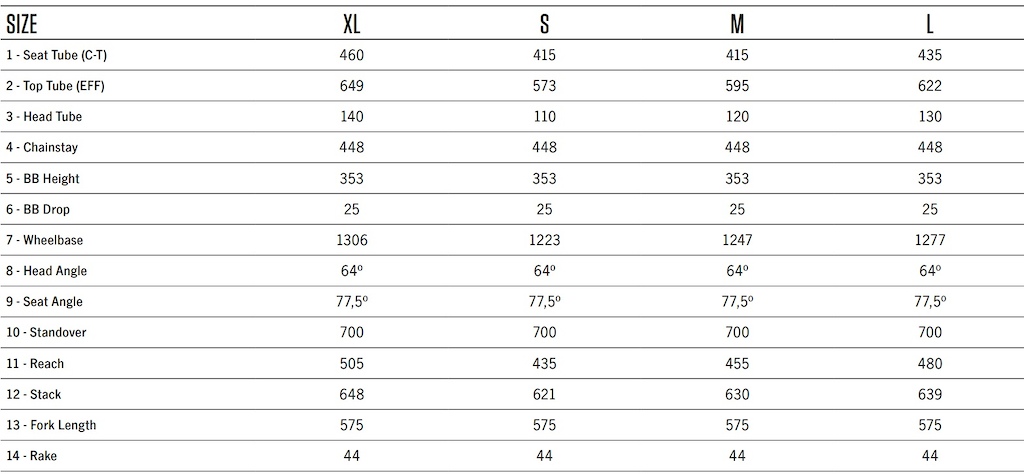
The Wild’s geometry numbers are fairly similar to the Rallon, its non-motorized enduro-oriented sibling. With a 160mm fork the head angle sits at 64-degrees, the reach of a size large measures 480mm, and the chainstays are 448mm across the board. I measured a head angle of 63.5-degrees with the 170mm fork installed on my test bike.
We’re used to bikes getting longer, lower, and slacker, but in this case Orbea actually increased the bottom bracket height by 5 millimeters to decrease the number of pedal strikes. The head tube length of the size large is 130mm, which crates a nice and tall front end, fitting to the Wild’s more descent-oriented intentions.
All four sizes use the same size chainstays and 29” wheels, which could make this a lot of bike for smaller riders to toss around. Having the option to run a 27.5” rear wheel without changing the geometry would be welcome feature – maybe we’ll see an aftermarket link released like Orbea has done in the past.
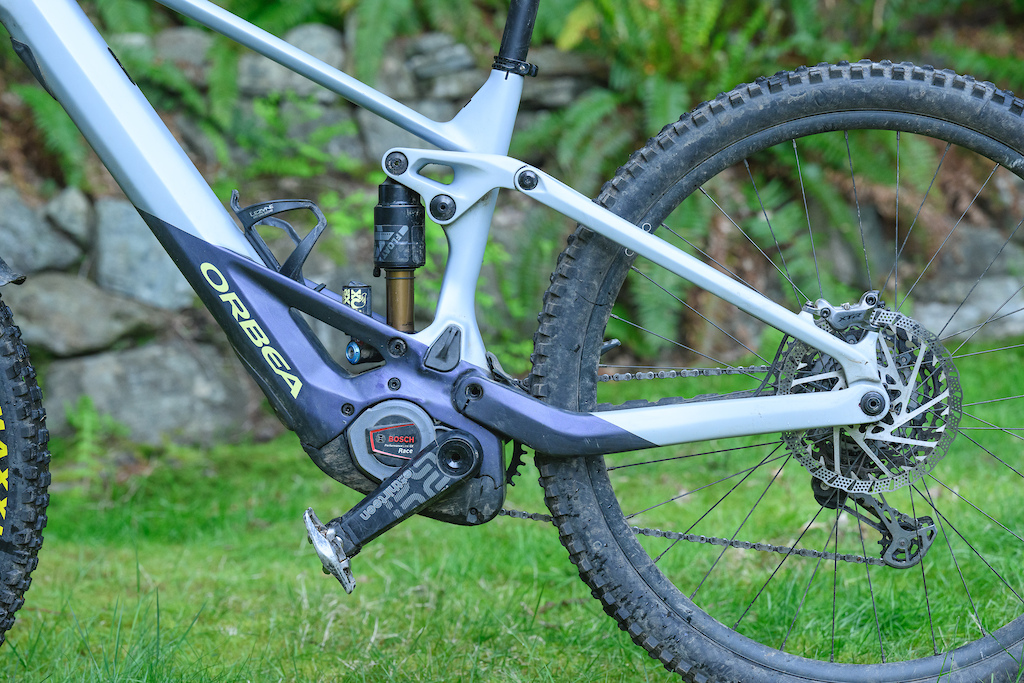
The Wild uses a concentric pivot around the rear axle, with a seat tube mounted rocker link driving the 205x65mm trunnion mounted shock to deliver 160mm of rear wheel travel. The leverage ratio is progressive, although the level of progression has been reduced slightly from the prior model.
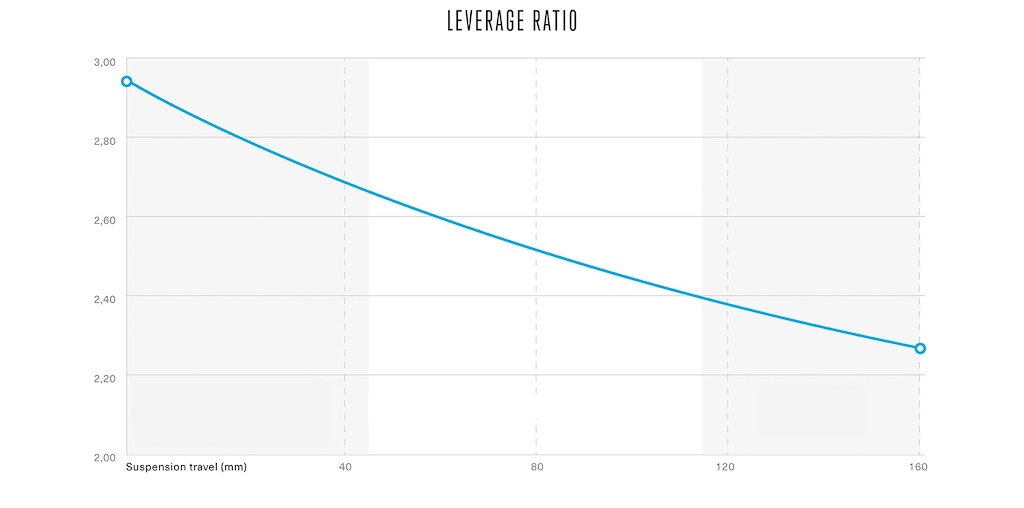
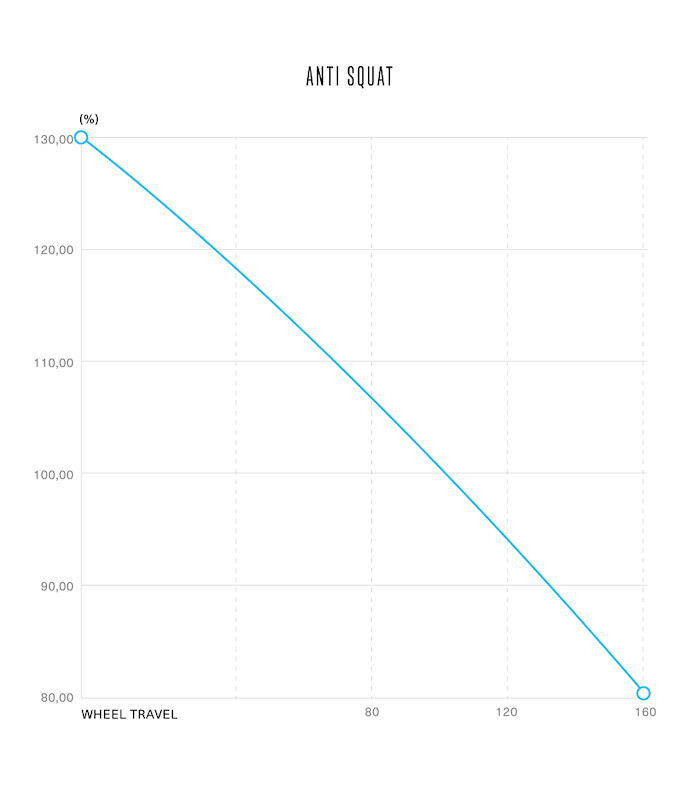
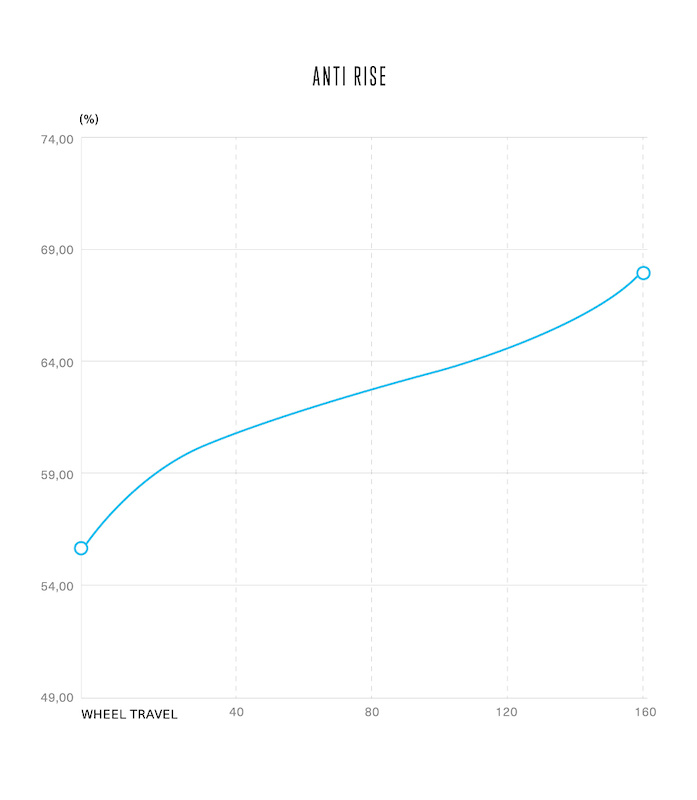
| Specifications | |
| Price | $11124 |
| Travel | 160mm |
| Rear Shock | Fox Float X2 |
| Fork | Fox 38 Float Factory 170mm |
| Headset | Alloy 1-1/2″, Black Oxidated Bearing |
| Cassette | Shimano XTR 12-speed, 10-51 tooth |
| Crankarms | e*thirteen Race Carbon |
| Bottom Bracket | Bosch Performance CX Race / 625 Wh battery |
| Rear Derailleur | Shimano XTR |
| Chain | Shimano CN-9100 |
| Shifter Pods | Shimano XTR |
| Handlebar | OC Mountain Control MC10 carbon |
| Stem | OC Mountain Control MC10, 40mm |
| Grips | Race Face |
| Brakes | Shimano XTR 4-piston |
| Wheelset | OQUO MC32 Team Aluminum |
| Tires | Maxxis Assegai / DHR II, MaxxGrip DH casing |
| Seat | Fizik Terra Aidon |
| Seatpost | Fox Transfer Factory |
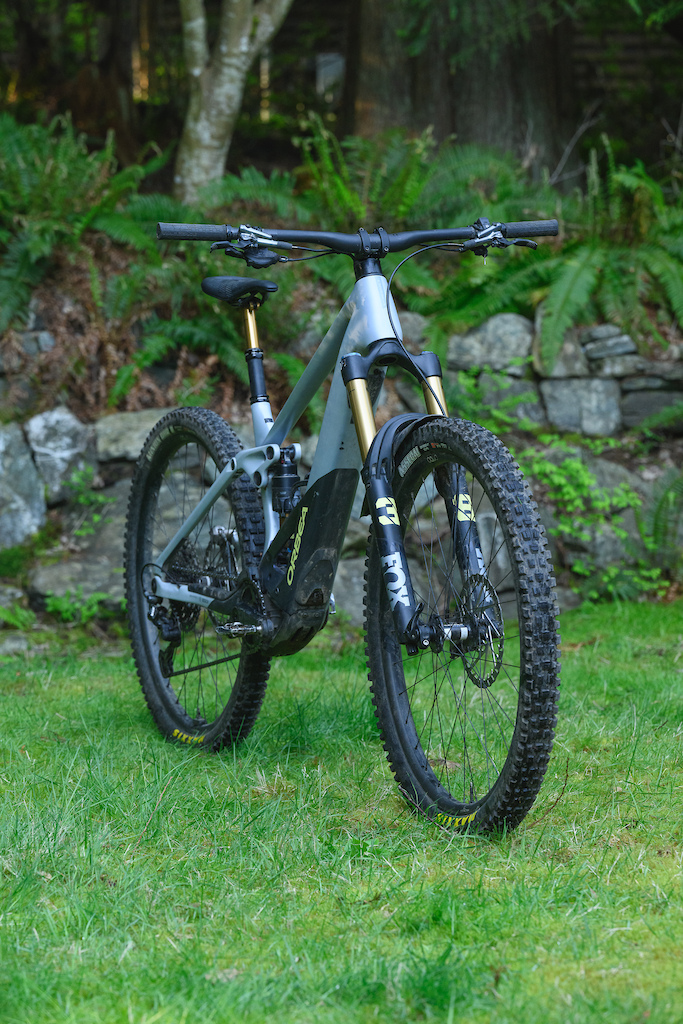
With a 40mm stem in place and the bars trimmed to 780mm I didn’t need to do anything out of the ordinary to adjust the cockpit to my liking.
For the suspension, I set the Fox 38 fork up with 95 psi (10 psi more than I’d run on a regular bike) and the low- and high-speed compression a few clicks from fully open. Orbea suggest setting up the Float X2 with 28 – 33% sag, so I stuck with 30%.
The Wild showed up with a Maxxis Assegai up front and a DHR II in the rear, both with DH casings and MaxxGrip rubber, an ideal option for the wet weather riding that was in store. I ran 21 psi for the front and 23 psi for the rear.

Location: Bellingham, WA, USA
Height: 5’11” / 180cm
Inseam: 33″ / 84cm
Weight: 160 lbs / 72.6 kg
Industry affiliations / sponsors: None
Instagram: @mikekazimer
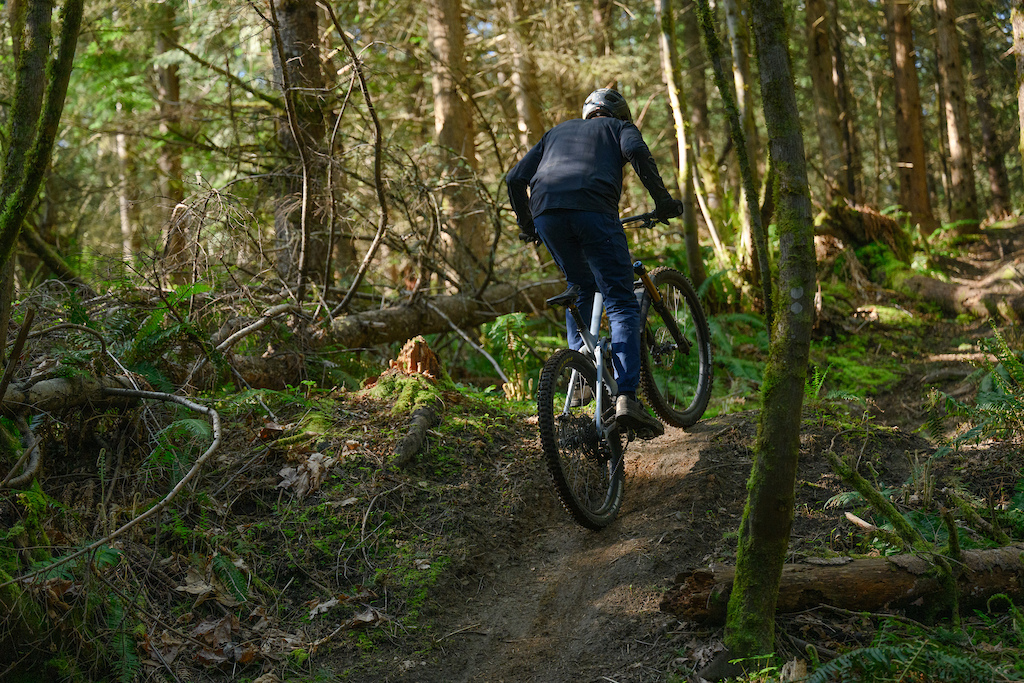
Getting up technical climbs on an eMTB isn’t always about pedaling and praying. Sure, sometimes that technique will work, but in other instances you’ll just end up looping out and looking over your shoulder to find a soft spot to land. Climbing success is determined more by how the motor’s power is delivered, and the climbing position dictated by the bike’s geometry. Sticky, grippy tires and an effective suspension design help too, and as it turns out the Wild possesses all of those crucial characteristics.
The Wild will blast up short, punchy climbs with ease, but it’s also possible to creep up extra-steep, technical sections the way a rock crawler would. Grab some brake here, a half pedal stroke there, top it off with a final out-of-the-saddle lunge and the Wild will get up some seriously awkward sections of trail. The Bosch motor obviously plays a large role in this equation, but the geometry shouldn’t be overlooked. The seated climbing position is upright and centers the rider between the wheels, reducing the number of times you’ll need to make dramatic weight shifts to maintain traction. When it is time to stand up, the higher front end makes it easier to lift the front end up and over obstacles.
For a good portion of the test period I was under the impression that my test bike had a 750 Wh battery, mainly due to the impressive range that I was getting. My numbers were comparable, and sometimes better, than when I did the same lap on a Specialized Tubo Levo with a 700 Wh battery. Part of the credit for that range lies with the Bosch’s Tour+ mode. In this mode the motor senses how hard you’re pedaling, decreasing the amount of support it provides on flat sections of trail, and increasing it when the grade gets steeper. It feels very natural, and for most rides it’s the mode I used while climbing or on rolling terrain.
As I mentioned in the recent Crestline review, another bike with Bosch’s race motor, I don’t think Race mode is necessary for most riders, myself included. It’s fun to play with, but the amount of power and the additional overrun make it a lot to handle on really technical sections of trails – the bike is a lot more manageable in the other modes.
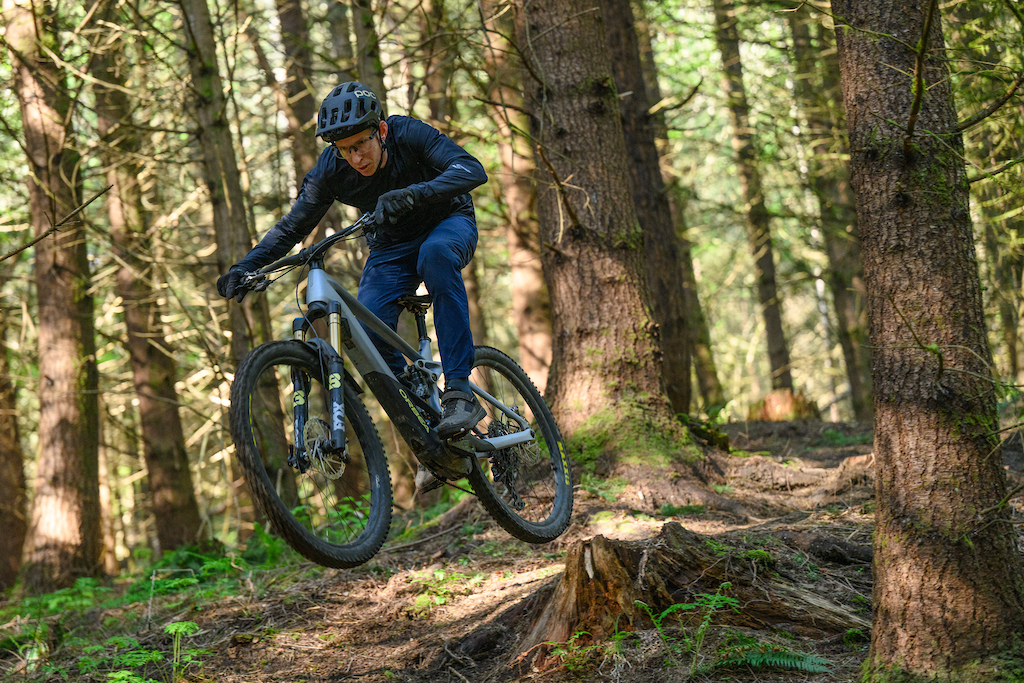
Coming up with geometry numbers that work well in a wide range of situations without making too many compromises can be tricky, but the Wild seems to hit the sweet spot. The 63.5-degree head angle (with a 170mm fork) is slack enough for the steepest steeps, and the 448mm chainstays provide plenty of stability without feeling unwieldy on tighter section of trail.
The concept of e-bike racing still seems silly to me, but after my time on the Wild I’d put this electric machine on my short list of bikes I’d want to roll up to a starting line on. It feels incredibly composed at higher speeds while descending, where the tall front end and slack head angle put the rider into a secure, ready for anything position.
There’s a punching bag-like quality to the way the Wild absorbs obstacles – it seems to relish high-speed smashing, and can withstand some serious hits without getting hung up or knocked off line. Bigger jumps and drops didn’t pose any problems, and even when I used all of the travel there wasn’t any unwanted clanking or harshness at the end of the stroke.
I didn’t ride the previous version of the Wild, so I can’t comment on the frame stiffness difference between the two, but I can say that this model feels extremely solid, in a good way. It doesn’t feel quite as plush or bottomless as the Ibis Oso, but it does strike a great balance between being soft enough off the top to take the edge of chattery sections of trail while retaining enough support to avoid using the travel too quickly. It’s the sort of bike that makes you want to go fast, just to see what’ll happen, one of my favorite traits in any bike, motorized or not.
The Wild doesn’t feel overly heavy, even though its actual weight is a few pounds heavier than Orbea originally claimed when it was first released – I have a hunch that 46-pound weight was for a size small with carbon wheels and silly light tires. In real life, the 50 pound weight with DH tires and aluminum wheels for the version I tested feels appropriate, and it’s in-line with bikes like the Santa Cruz Bullit, Transition Repeater.
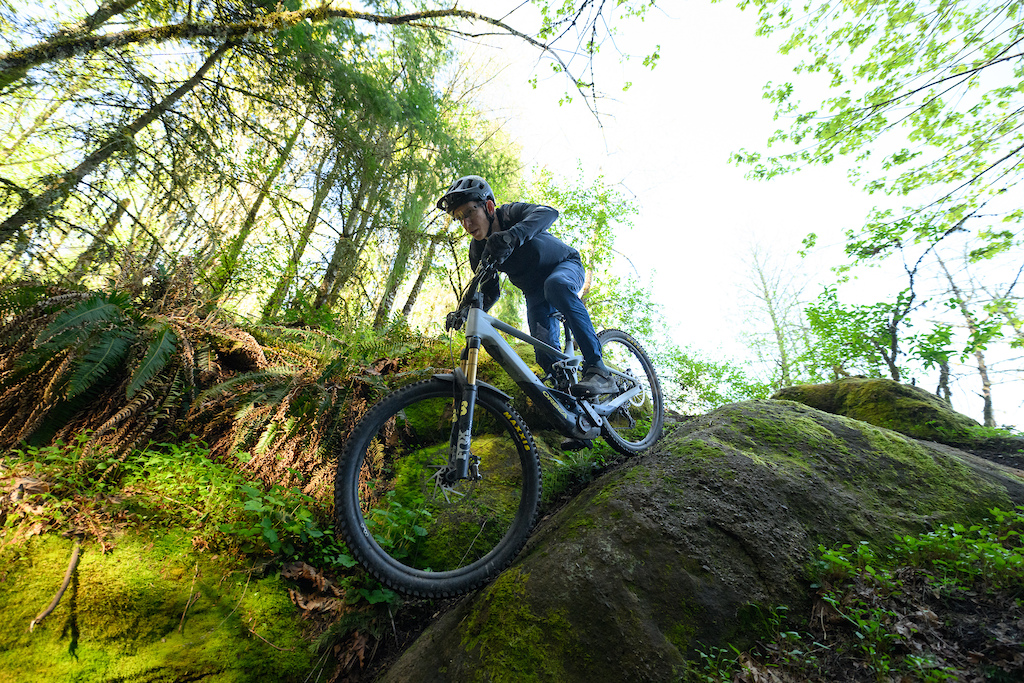
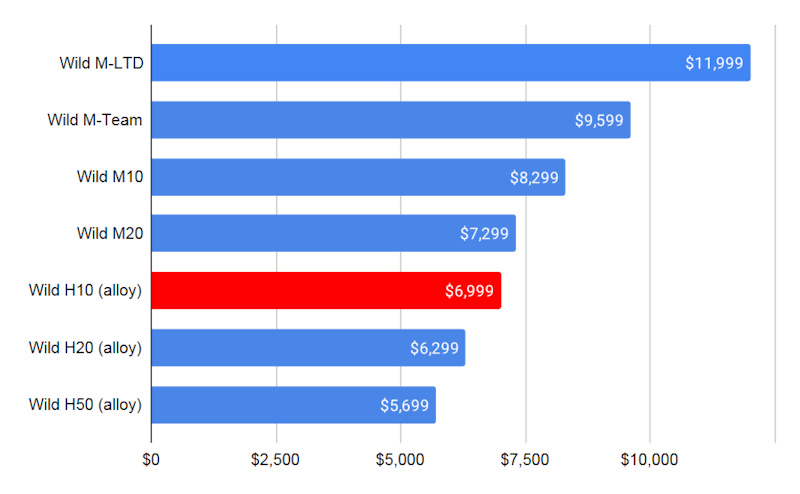
What’s the Best Value?
If I was on a budget I wouldn’t be shopping for an eMTB, but that doesn’t mean it’s not worth considering which models present the best value. Personally, I’d be looking at the aluminum Wild H10, which is $7,034 USD. The parts spec is solid, with a 160mm Fox Performance fork and Float X shock, Shimano SLX cassette, XT derailleur, and Deore 4-piston brakes. I’d spring for the DH-casing tires and call it good, although I’d also consider budgeting an extra $100 or so for a 170mm air spring, or treating myself and adding $369 to the price to get the bike equipped with a 170mm Fox 38 Grip2 fork.
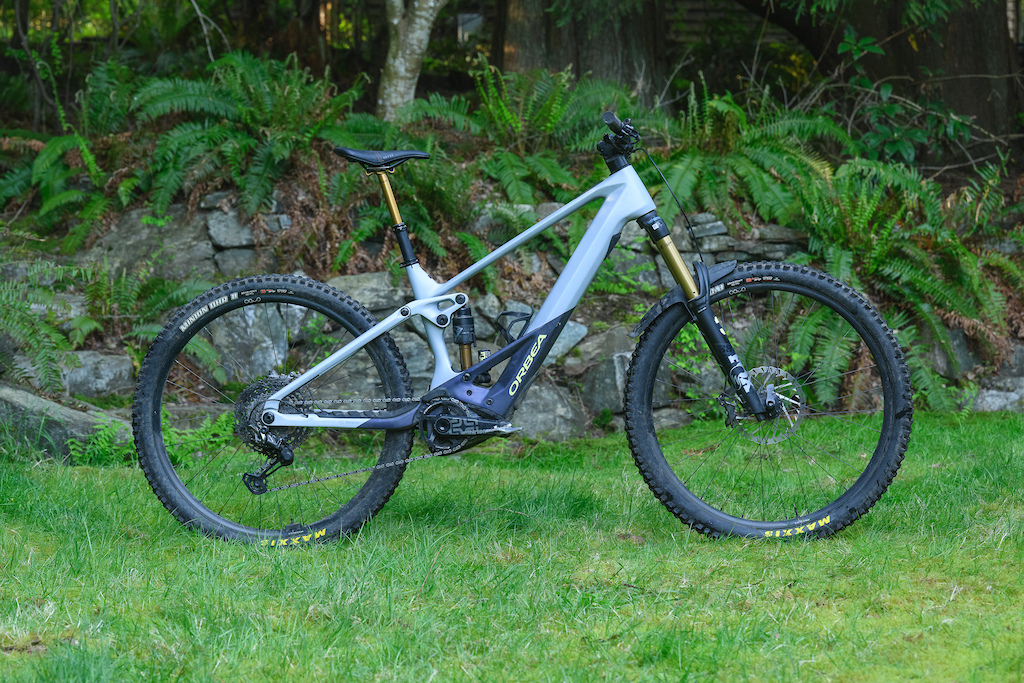
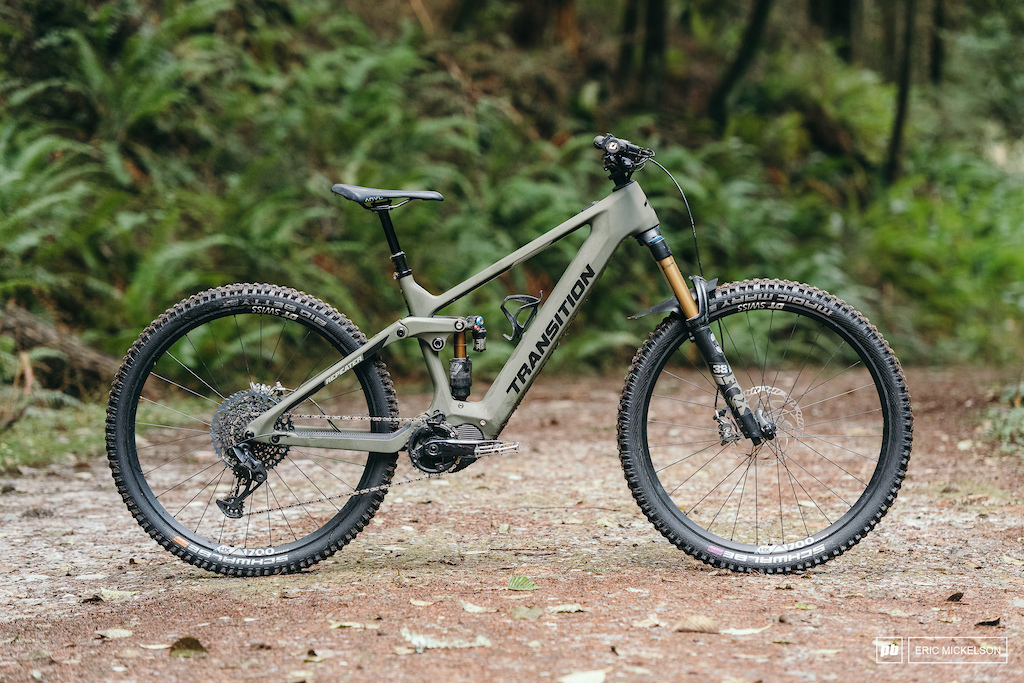
How Does It Compare?
The Orbea Wild and the Transition Repeater both have 160mm of rear travel, 29” wheels, and similar geometry numbers. The head angle and reach are the same for a size large, and there’s only a 3mm difference in wheelbase. Handling wise they’re not worlds apart, although the Wild does have shorter chainstays (448 vs 455mm), which makes it a little easier to get the front end up or slap the rear wheel through corners.
It’s really the motor that’s the main differentiator, and in this match-up the point goes to Bosch. Shimano’s EP8 motor requires pedaling at a higher cadence to get the most out of it, and its power delivery doesn’t feel nearly as natural as Bosch’s. It also still relies on a wired display, and the battery level seem to drop much more quickly once the 20% / 1 bar level is reached. The EP8 is also louder while pedaling (and coasting) than the Bosch motor, and the Wild is a quieter, less rattly bike in general compared to the Repeater.
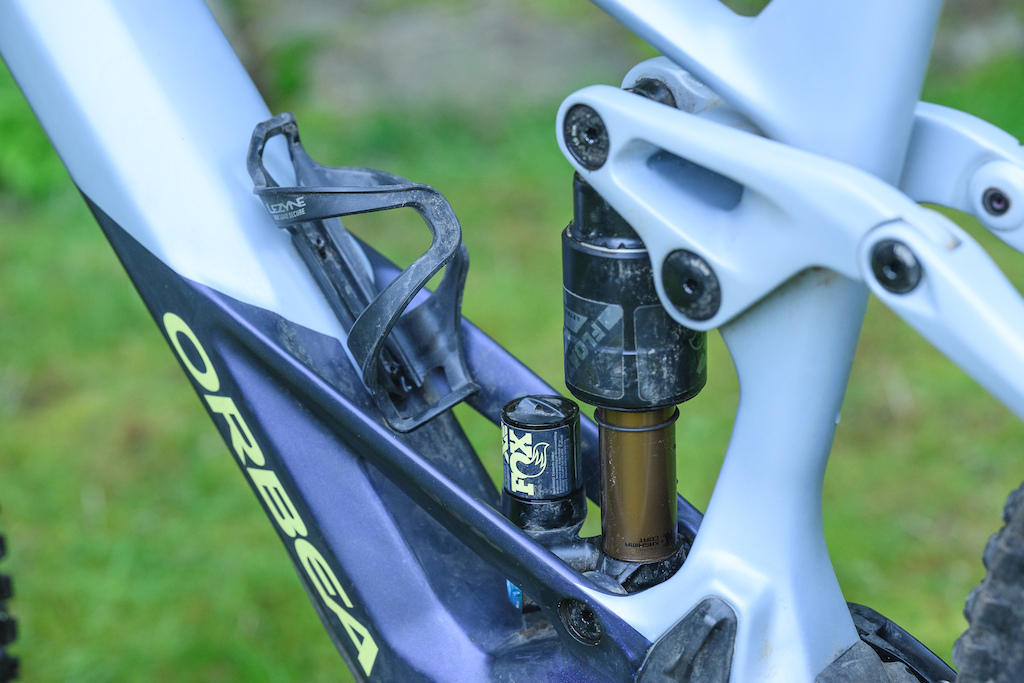
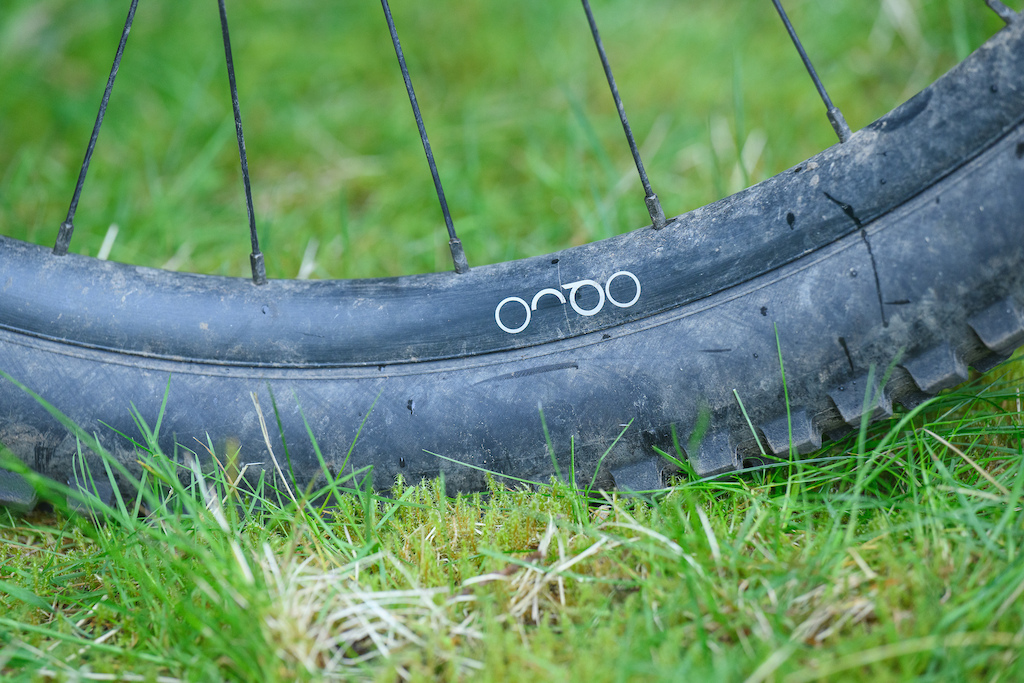
Technical Report
Headset: The Wild has been through some seriously nasty testing conditions – deep puddles, tons of mud, snow; pretty much all of the elements that can wreak havoc on bearings. The headset bearings are still spinning smoothly, and don’t show any signs of needing to be serviced or replaced any time soon. I’m still not a fan of the extra hassle that thru-headset cable routing brings (I said some very bad words when I dropped the split aluminum headset spacers while working on the Wild), but in this case the design does seem to be well sealed against the elements.
Battery removal: The Wild’s battery isn’t removable without also removing the motor, an inconvenience Orbea accepted in order to increase the frame’s stiffness. After reading that Orbea’s team mechanics are able to swap a battery in 15 minutes I decided to try for myself. It took me a lot longer than 15 minutes, mainly because I was flying blind without any clear instructions, but I can see how that number is feasible with practice. Unless you’re a privateer e-bike racer or someone who’s planning on flying with their e-bike (which sounds like a pain no matter how easy the battery is to remove) I don’t think that the lack of a quick-release battery is much of an issue.
Rotors: The rotors pictured in this review aren’t the stock Galfer rotors the bike comes with – I was doing some experimenting with different pad / rotor combinations to minimize the amount of noise and maximize power. The stock configuration works well, but I’d recommend going with a 220mm front rotor for even more control.
Fox Float X2 shock: The X2 has gotten something of a bad rap over the last few seasons due to what seemed to be quality control issues. The shock on the Wild hasn’t had any issues so far, and it’s well past the point that I would have expected any to appear.

+ Extremely calm and composed in the steeps & at speed
+ Powerful Bosch motor with wireless controller and simple display
+ Customizable built kits allow for a wide range of build options
– Integrated battery decreases the potential for mega-long, multi-battery missions.
– Thru-headset cable routing is well sealed, but it’s still more of a hassle to work on
– No mixed wheel options on smaller (or any) sizes



